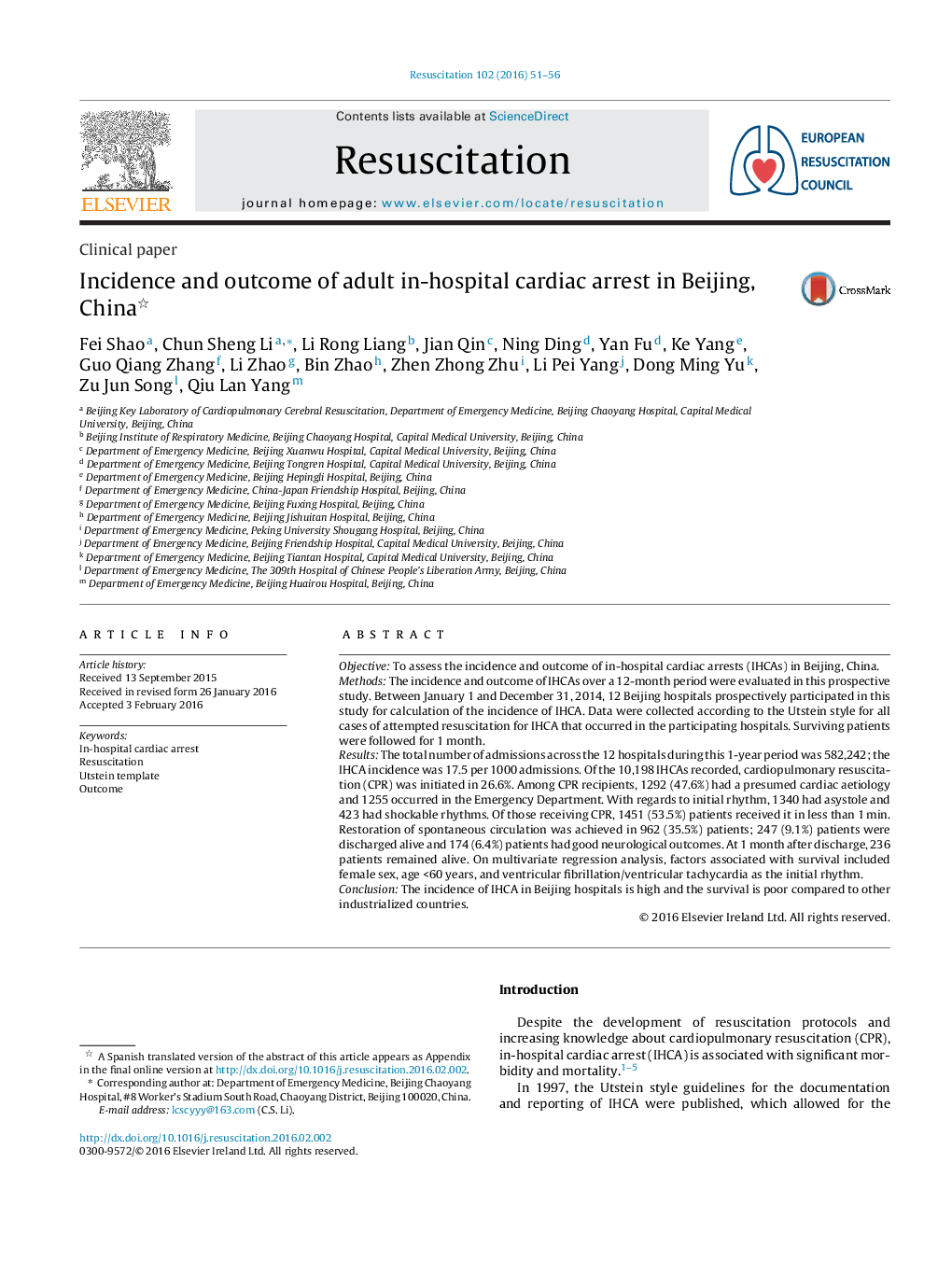| Article ID | Journal | Published Year | Pages | File Type |
|---|---|---|---|---|
| 3007772 | Resuscitation | 2016 | 6 Pages |
ObjectiveTo assess the incidence and outcome of in-hospital cardiac arrests (IHCAs) in Beijing, China.MethodsThe incidence and outcome of IHCAs over a 12-month period were evaluated in this prospective study. Between January 1 and December 31, 2014, 12 Beijing hospitals prospectively participated in this study for calculation of the incidence of IHCA. Data were collected according to the Utstein style for all cases of attempted resuscitation for IHCA that occurred in the participating hospitals. Surviving patients were followed for 1 month.ResultsThe total number of admissions across the 12 hospitals during this 1-year period was 582,242; the IHCA incidence was 17.5 per 1000 admissions. Of the 10,198 IHCAs recorded, cardiopulmonary resuscitation (CPR) was initiated in 26.6%. Among CPR recipients, 1292 (47.6%) had a presumed cardiac aetiology and 1255 occurred in the Emergency Department. With regards to initial rhythm, 1340 had asystole and 423 had shockable rhythms. Of those receiving CPR, 1451 (53.5%) patients received it in less than 1 min. Restoration of spontaneous circulation was achieved in 962 (35.5%) patients; 247 (9.1%) patients were discharged alive and 174 (6.4%) patients had good neurological outcomes. At 1 month after discharge, 236 patients remained alive. On multivariate regression analysis, factors associated with survival included female sex, age <60 years, and ventricular fibrillation/ventricular tachycardia as the initial rhythm.ConclusionThe incidence of IHCA in Beijing hospitals is high and the survival is poor compared to other industrialized countries.
